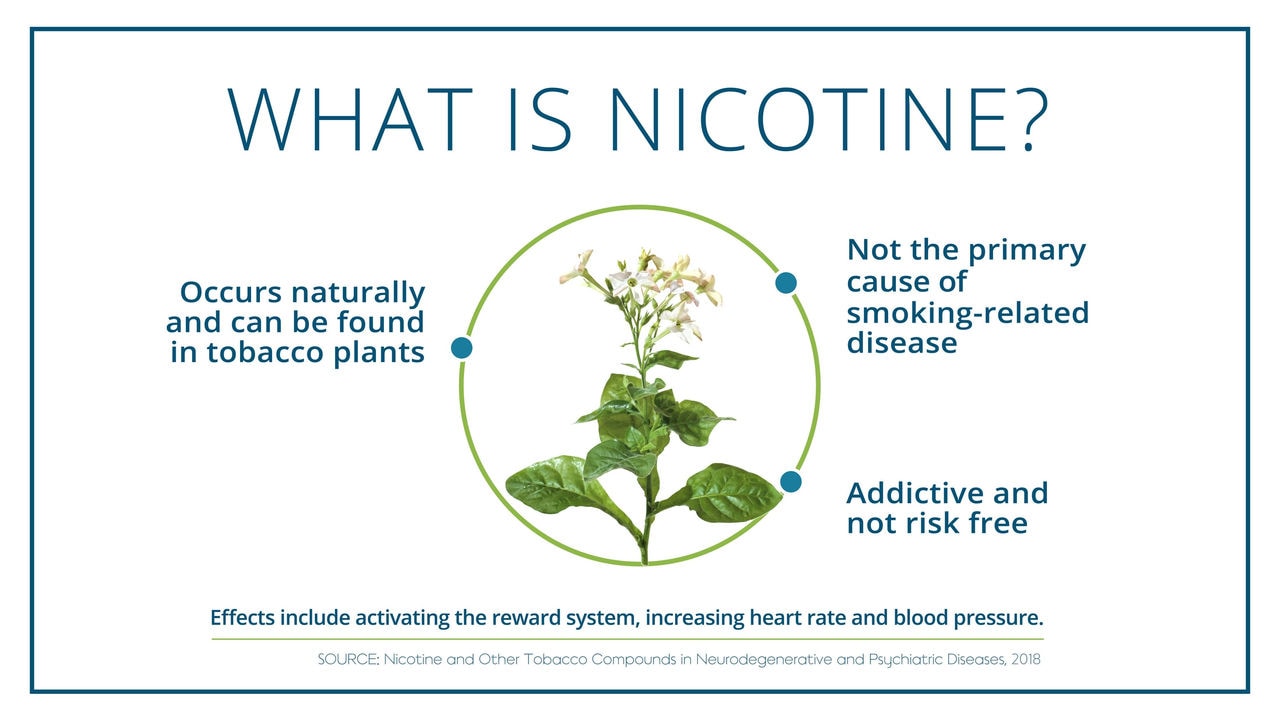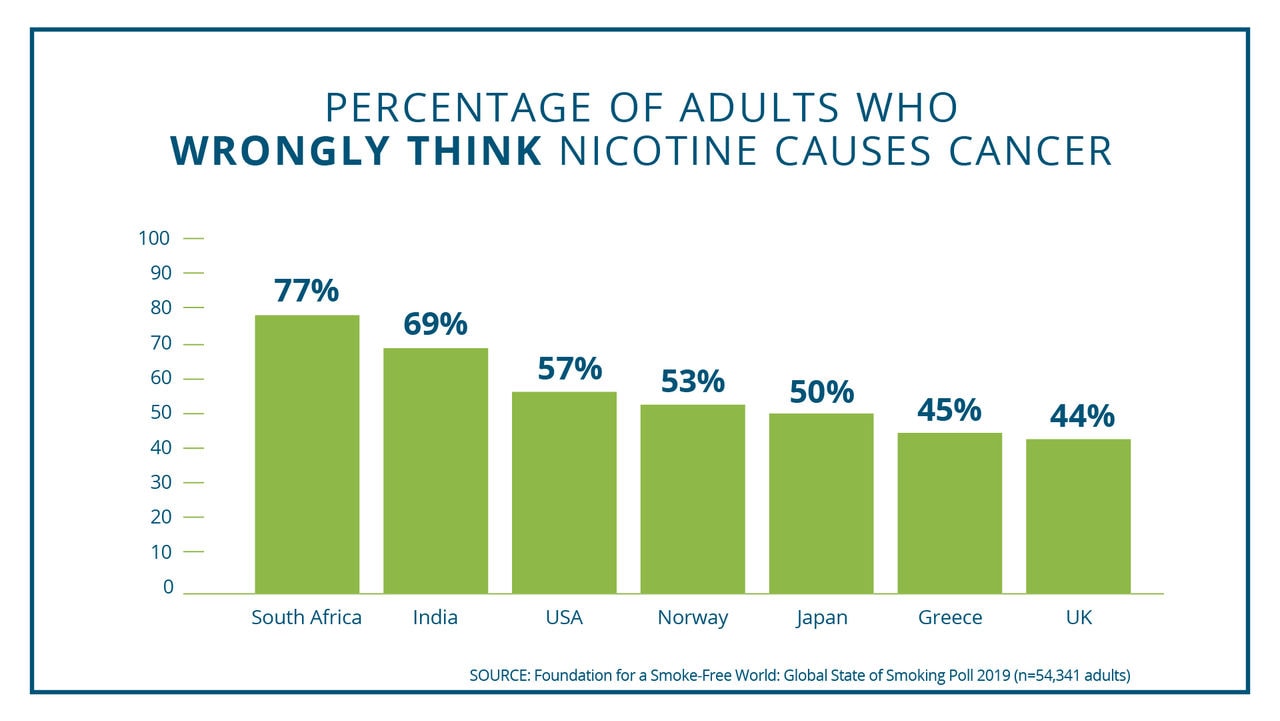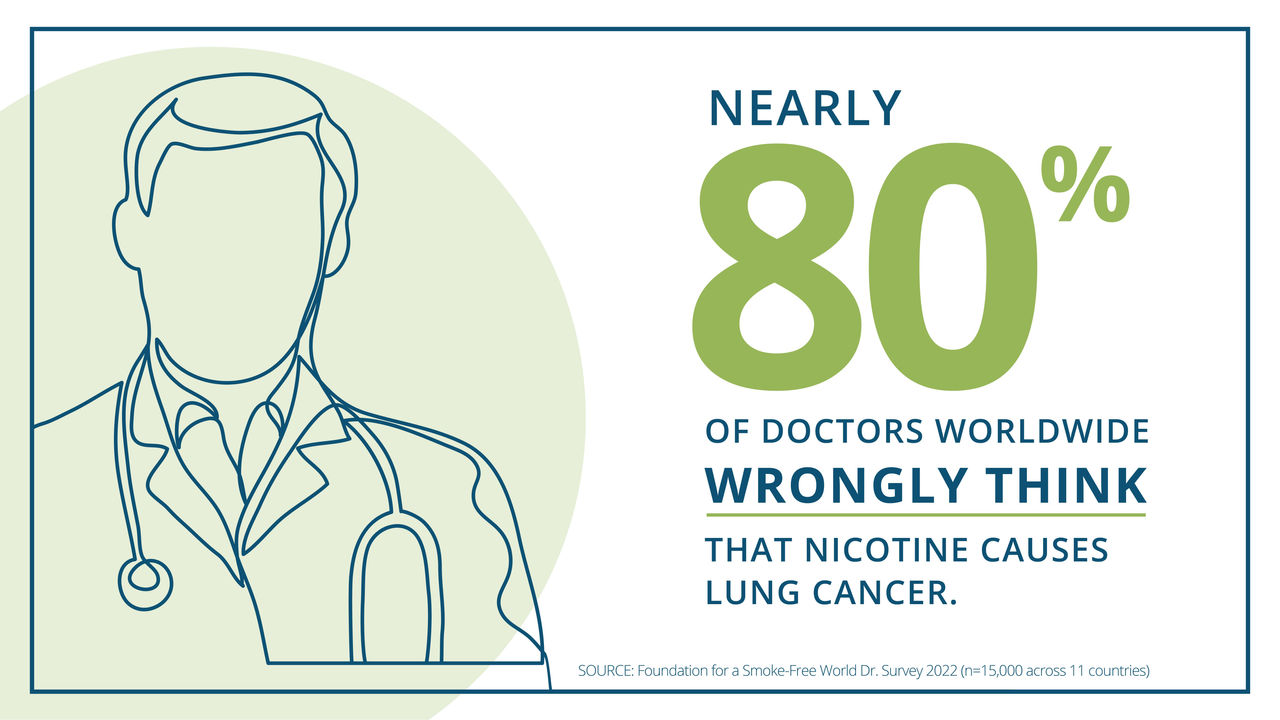The benefits of knowing the facts about nicotine
Nicotine is addictive and not risk free, but its role in smoking-related diseases is often misunderstood. Here is what the world’s hundreds of millions of adult smokers—and their physicians—need to know about nicotine and smoke-free alternatives, so they can make better choices than continuing to smoke.
Nicotine is a plant-based stimulant
Nicotine belongs to a class of organic compounds called alkaloids and occurs naturally in the family of plants commonly known as “nightshades,” including—at very low dosages—in tomatoes and potatoes. What’s most commonly known is that it is found—at its highest levels—in the tobacco plant. Although the primary purpose of the chemical in plants is not definitively known, studies have shown that at least one of its functions is to protect the plant from insects.
Nicotine’s effects in people, however, are different from its role in plants. Since prehistoric times, people have recognized the stimulating effects of the smoke created by burning tobacco, and smoking has become the most common form of nicotine uptake ever since. Nicotine is addictive and it’s one of the reasons why people smoke. Nonetheless, other factors also play a role in making smoking addictive—such as ritual, sensory experience, and social setting.

Find the book Nicotine and Other Tobacco Compounds in Neurodegenerative and Psychiatric Diseases in our publications library.
Nicotine activates the reward system
It’s recognized that the addictive properties of smoking are caused by a complex interaction of factors—not just nicotine. These factors substantially enhance the action that would be caused by nicotine alone. Exposure to nicotine and the extent of its effects can also be influenced by individual differences in smoking behavior, metabolism, body mass index, and genetics.
Nicotine can be absorbed in a variety of ways, like through the lungs, the mouth, or the skin—such as via cigarettes, chewing tobacco, or nicotine patches, for example. The dosage and how it’s absorbed can also determine the speed and intensity of its delivery. Once absorbed, it enters the bloodstream and is distributed, at various concentrations, to all tissues and organs, including the brain. Nicotine modulates the brain’s “reward system” by binding to specific receptors distributed in certain regions. When it does, it triggers the release of dopamine, GABA, glutamate, acetylcholine, and noradrenaline. As a result, nicotine may stimulate and ultimately affect short-term brain functions such as emotion, learning, and memory. The action of nicotine in the brain can also trigger physiological effects outside the brain. For example, the messenger epinephrine is released into the bloodstream, leading to temporary narrowing of blood vessels, higher blood pressure, and increased heart rate.
After repeated nicotine stimulation, the brain adapts to the presence of nicotine, a process that is reversible when a person stops using nicotine-containing products. This process of nicotine stimulation can ultimately lead to difficulty quitting—although it is possible, and millions of smokers quit every year.
But nicotine is not what makes cigarettes so harmful
Nicotine is addictive, and it is not risk free. Minors, pregnant women, nursing mothers, and people with conditions such as heart disease, high blood pressure, or diabetes should not use tobacco or nicotine-containing products. But, nicotine is not the primary cause of smoking-related diseases. The highest risk of harm comes from burning tobacco to produce smoke. Tobacco smoke contains more than 6,000 chemicals, of which around 100 harmful and potentially harmful constituents (HPHCs) have been classified by public health agencies as contributing to smoking-related disease.
Eliminating combustion—and consequently, dramatically reducing the levels of harmful chemicals—is the cornerstone of smoke-free product development. These products are not risk free and contain nicotine, which is addictive, but can offer taste, ritual, sensation, and nicotine levels comparable to cigarettes to help ensure that adults, who would otherwise continue to smoke, can fully switch.
Unfortunately, people often conflate the effects of nicotine with the more harmful effects of cigarette smoke, preventing adult smokers from understanding that different nicotine-containing products have different risks associated with them. Such misunderstandings aren’t limited to consumers—some professionals also wrongly attribute the harmful effects of cigarette smoke to nicotine.

Even physicians often misunderstand the risk of nicotine
The U.S. Food and Drug Administration (FDA) Commissioner and the Center for Tobacco Products (CTP) Director stated in 2017, “Nicotine, though not benign, is not directly responsible for the tobacco-caused cancer, lung disease, and heart disease that kill hundreds of thousands of Americans each year. The FDA’s approach to reducing the devastating toll of tobacco use must be rooted in this foundational understanding: other chemical compounds in tobacco, and in the smoke created by combustion, are primarily to blame for such health harms.”

Yet, astoundingly, a 2022 survey demonstrated that nearly 80% of doctors worldwide believe nicotine causes lung cancer. What’s more, over 80% of U.S. physicians believe nicotine causes cardiovascular disease—including cardiologists. And more than 80% of U.S. physicians in the country believe nicotine causes chronic obstructive pulmonary disease (COPD) —including pulmonologists. Another survey from 2022 revealed that more than 60% of U.S. physicians believe all tobacco and nicotine products have equal risk. And 22% of U.S. physicians recommend smoke-free alternatives to smoking patients as a better option to continued smoking.
The best choice for anyone is to quit or, better yet, never begin using tobacco and nicotine products. Still, many continue to smoke. For the hundreds of millions of adult smokers who don't stop smoking, proper understanding of the role of nicotine and of the smoke-free category is critical. Accurate and non-misleading communication, increased awareness and better options for adults who would otherwise continue to smoke will help accelerating the end of cigarettes.





